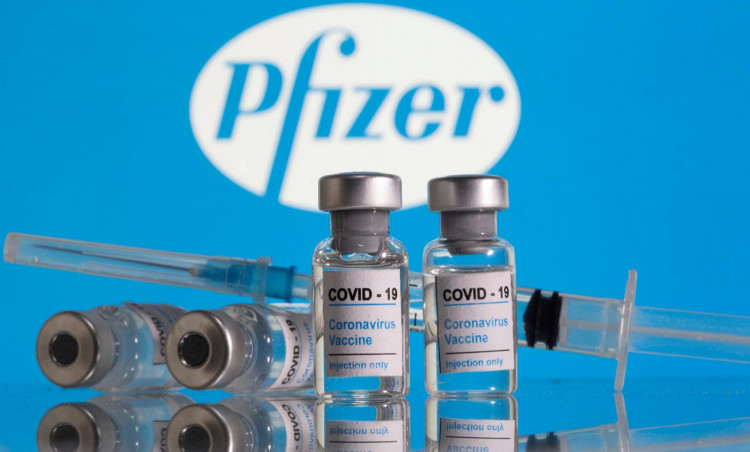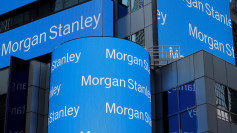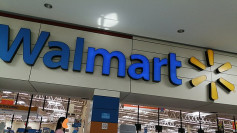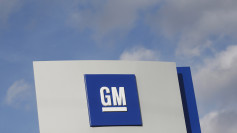Pfizer's third-quarter performance exceeded expectations, driven by a surge in demand for its COVID-19 treatment Paxlovid, along with steady growth from its other pharmaceutical products. The company reported $17.7 billion in total revenue for the quarter, a 31% increase from the same period last year, with adjusted earnings of $1.06 per share. This beat analyst expectations of $14.92 billion in revenue and 61 cents per share, according to FactSet.
One of the key factors boosting Pfizer's revenue was the $2.7 billion generated from Paxlovid sales. This growth was largely driven by the recent COVID-19 wave and a significant one-time order from the U.S. Strategic National Stockpile. The company also reported a 9% increase in sales of its COVID-19 vaccine, Comirnaty, which contributed $1.4 billion to its overall revenue. Pfizer's strong performance in this quarter underscores the company's ability to capitalize on renewed demand for COVID-related treatments as the virus continues to impact global health systems.
Pfizer also experienced notable revenue growth from non-COVID products. Seagen, a company acquired by Pfizer for $43 billion in 2022, contributed $854 million in revenue from its cancer treatments. This included $409 million from Padcev, a treatment for bladder cancer, and $268 million from Adcetris, which targets certain types of lymphoma. Pfizer's Vyndaqel, used to treat a type of cardiomyopathy, also saw a 62% rise in sales, generating $1.45 billion during the quarter. The company's blood thinner, Eliquis, co-marketed with Bristol Myers Squibb, contributed $1.62 billion, slightly above expectations.
Pfizer's strong quarterly results come amidst ongoing criticism from activist investor Starboard Value, which has been vocal about the company's acquisitions and overall financial strategy. Starboard, which holds a roughly $1 billion stake in Pfizer, argues that the company has failed to fully capitalize on the windfall it received from its COVID products, leading to what it sees as poor investments in research and development. Starboard CEO Jeffrey Smith has called for a more disciplined investment strategy and greater accountability for recent acquisitions, including Pfizer's decision to withdraw a critical sickle cell drug from world markets. Despite these pressures, Pfizer remains committed to delivering significant cost savings, projecting at least $4 billion in savings by year-end.
Pfizer's leadership has taken these concerns seriously and reiterated its commitment to disciplined investments and cost-cutting measures. The company reaffirmed its multiyear plan to cut costs, with the first phase expected to yield $1.5 billion in savings by 2027. Additionally, Pfizer is working to streamline its operations as it navigates the post-pandemic landscape, particularly as the demand for COVID treatments stabilizes.
Looking ahead, Pfizer raised its full-year forecast, now expecting adjusted earnings per share to range between $2.75 and $2.95, up from its previous estimate of $2.45 to $2.65. The company also revised its revenue outlook, projecting between $61 billion and $64 billion for 2024, reflecting increased demand for its COVID products, as well as growth in its other key pharmaceutical categories. Notably, Pfizer anticipates $5 billion in revenue from its COVID-19 vaccine and $5.5 billion from Paxlovid.
While COVID products continue to play a critical role in Pfizer's overall performance, the company is making strides in diversifying its revenue streams. The third-quarter report highlights the success of its respiratory syncytial virus (RSV) vaccine, Abrysvo, which brought in $356 million in revenue. Abrysvo, approved earlier this year, targets seniors and expectant mothers who can pass on protection to their fetuses, and has recently been approved for adults aged 18 to 59 who are at increased risk for the disease, positioning the vaccine for wider use.
Pfizer's solid performance in both COVID and non-COVID categories has allowed the company to recover from the sharp decline in its COVID business earlier in the year. Paxlovid's impressive sales growth-jumping from $202 million in the same period last year to $2.7 billion this quarter-underscores the continued relevance of COVID treatments as the virus lingers. This demand was further bolstered by the one-time delivery of 1 million Paxlovid treatment courses to the U.S. government, which accounted for $442 million in revenue.






